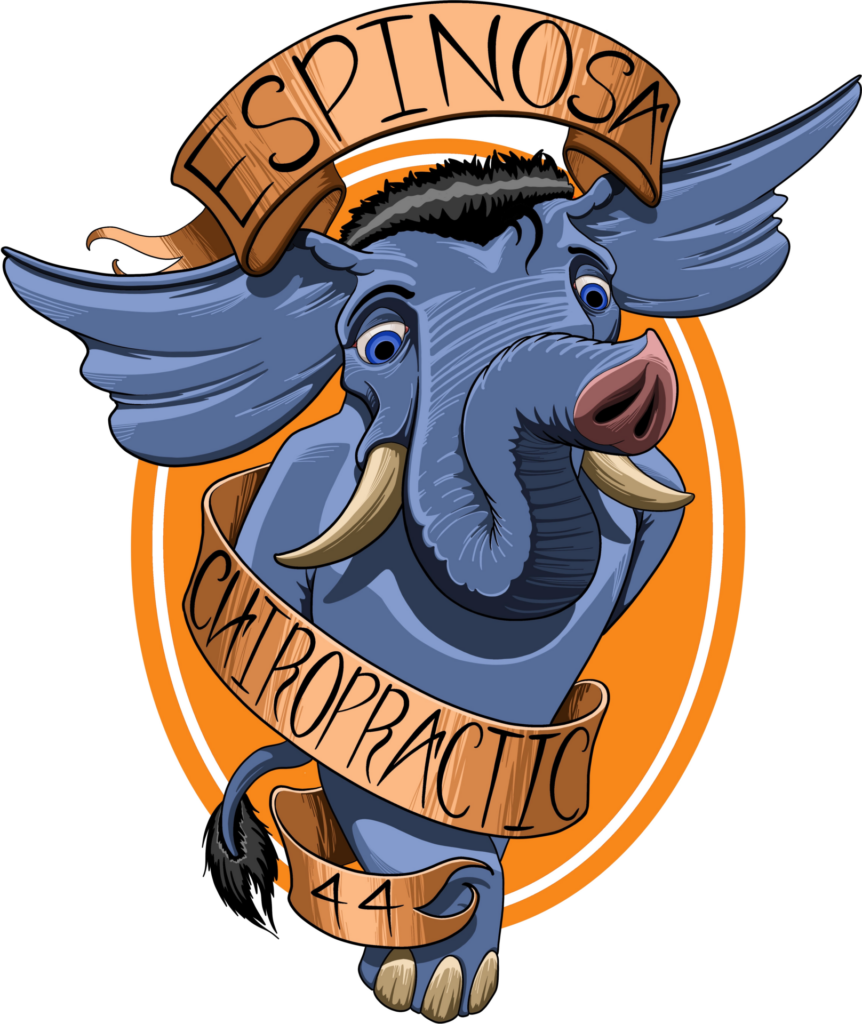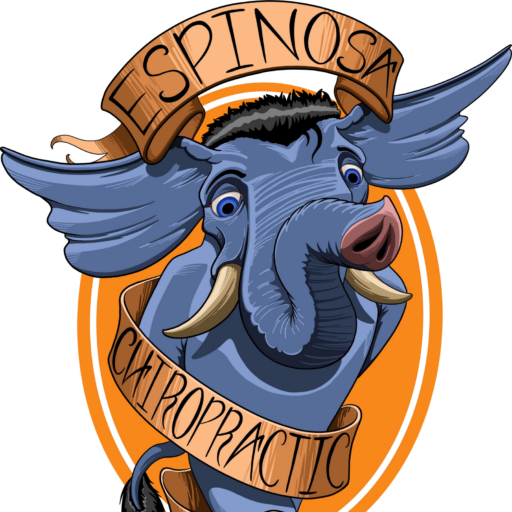Blog
Stretching with Resistance
Resistance stretching is about optimization: it allows you to achieve the flexibility improvements of a stretch routine while simultaneously building muscle. The idea is counter-intuitive, relying on the notion that a muscle can be shortened and lengthened simultaneously, giving you the best bang for your buck when it comes to your time. The 2016 Olympics brought this modality into the spotlight, as many elite athletes have made it a part of their greater fitness plans. But you don’t have to be an Olympian to reap the benefits of resistance stretching; it can be helpful for anyone interested in maximizing the value per minute ratio in their personal fitness plan. Stretches we can show you at our office include:
- Resisted neck twists
- Resisted hip flexion
- Partner-resisted upper back stretching
- Partner-resisted hamstring stretching
- Core development stretching
Of course, none of these stretches should be undertaken unless your body is in conducive shape, meaning free of pain and with an appropriate range of motion that will prevent you from incurring injury. A chiropractic adjustment helps keep your spine balanced so that you can pursue any physical activity and feel confident that your body will not falter. Here are the benefits to be had from resistance stretching:
- Improves core stability
- Encourages spinal balance
- Improves flexibility and, thereby, range of motion
- Contributes to the longevity of the body, pun intended
- Improves joint mechanics
- Reduces joint stress and pain
Stretching and exercise are more about commitment than intensity; instilling a penchant for working out is a key way that you can influence your well-being. Call our office if you want to learn more about how resistance stretching can fit into your life.
Eating for Herniated Discs
There are no two ways about it: a healthy spine begins with the nutrients you ingest on a daily basis. The great thing about nutrition is that certain ingredients can be used to target certain conditions and help different parts of the body, so you can effectively customize your diet to account for any condition you have. Herniated discs are a great example of this: the recurrent inflammation and pain involved with a herniated disc can be affected positively by a diet that incorporates anti-inflammatory ingredients and those that encourage the production and maintenance of healthy cartilage.
The anatomy of the injury gives us clues as to what to eat. A herniated disc involves the cracking of the annulus fibrosus, which is made up of strong collagen fibers. Inflammation is a part of the body’s natural healing response, but it causes a great deal of discomfort. Foods and supplements to consider are therefore in the categories:
- Vitamin C: helps the body to form collagen, which binds to and supports tissue.
- Omega-3 fatty acids: found in high concentrations in fish oil, this is a great ingredient for combating inflammation.
- Foods rich in sulfur: sulfur is an essential mineral that supports collagen production. It can be found in cruciferous vegetables, arugula, dairy, eggs, and legumes.
- Glucosamine sulfate: often found in supplement form, this compound helps the body form chemicals that repair damaged cartilage.
Healing your herniated disc requires a holistic response. At our office, we can help you find relief from the pain and stiffness of the injury through a coordinated plan that involves chiropractic adjustment, spinal decompression, diet, and exercise.
Fighting Sciatica
Few things ruin a good day like a flare-up of sciatica. The condition characterized by pain and stiffness in the lower back, aching in the buttocks, and numbness and tingling in the lower extremities can make it difficult to stand up, let alone get on with your day. The longest nerve in the human body, running adjacent to the piriformis muscle, the sciatic nerve is responsible for powering many of the muscles in the back side of the lower body, which means that when things go wrong with the sciatic nerve, the results can be serious. The most common things that contribute to sciatic nerve compression are herniated discs, impingement by the piriformis muscle and a stiff, imbalanced lower back.
Chiropractic is a perfect treatment for easing the discomfort associated with sciatica. Chiropractic adjustment and the decompression associated with spinal traction are great modalities for responding to the kind of impingement to the sciatic nerve that results from a herniated disc or a subluxation. When muscles, especially crucial ones such as the piriformis, become strained, they can also put pressure on the sciatic nerve. This kind of condition responds well to trigger point therapy, which targets specific points and releases the area from tension.
But chiropractic is only the beginning; to truly break the grip of recurrent sciatica from your life means to make a commitment to regular exercise and stretching that will keep the area free of tension on a regular basis. At our office, we are concerned with your quality of life and we would like to help you improve it without the necessity of surgical or pharmaceutical intervention.
Herniated Discs – How To Recover
A herniated disc is the logical outcome of 21st-century lifestyles which require more time spent sedentary than in any previous generation. The degree of the injury dictates the severity of treatment: while some people may incur a herniated disc without even feeling it, for others the pain is so severe as to require surgery. Most often, herniated discs will heal themselves given enough time and attention to recovery. At our chiropractic office, we offer therapy that responds to the individual when they decide the pain is too much to bear but they are not ready to consider surgery. We can help you manage and reduce pain symptoms and improve recovery time.
The human spine is made up of vertebrae and between each vertebra is an intervertebral disc, made up of two primary layers. The annulus fibrosus is the outer layer, made up of strong collagen fibers and the nucleus pulposus is a softer, gel-like inner layer that performs the shock-absorbing function within the spine. A healthy disc allows for a full range of motion and allows the vertebrae to withstand a reasonable amount of compression. Herniation is the compromise of this delicate set-up: as we age, factors such as lack of exercise, poor nutrition, persistently poor posture, and others conspire to crack the annulus fibrosus, allowing the inner layer to leak out or bulge. Pain often follows because the bulge will impinge on a nearby nerve root.
Chiropractic does not claim to be a panacea for herniated discs. Our treatment does not correct the actual tear; instead it support’s the body’s natural attempt at healing itself. With modalities such as chiropractic adjustment and spinal decompression, we can help reduce the severity of pain and inflammation so that you can focus on eating well and exercising lightly until it is healed. If you are still considering surgery, improvements in pain and mobility from chiropractic care serve as good indicators for success post-surgery.
Hydration For Health
What is a way that you can immediately feel better, mentally and physically? The answer is simple and natural: drink more water.
Staying hydrated is essential for maintaining good health and overall well-being. The human body is made up of about 60% water, and water is needed for numerous bodily functions, including regulating body temperature, carrying nutrients and oxygen to cells, and removing waste products. Dehydration can lead to a range of negative health outcomes, including fatigue, headaches, constipation, and kidney problems. It is important to drink enough water and fluids throughout the day to stay properly hydrated. The amount of water a person needs can vary based on factors such as age, activity level, and climate. It is recommended that adults drink at least eight 8-ounce glasses of water per day. Other sources of fluids, such as herbal tea or fruit juice, can also contribute to overall hydration. Staying hydrated can help to maintain physical and mental health, and is an important aspect of self-care.
As practitioners and proponents of holistic health, there are few things we can recommend more highly than getting your daily dose of H2O. What to expect from consuming your daily recommended amount of water (1 quart per 50 pounds of body weight per day)
- Clearer mental function
- Better physical performance
- Better metabolic and digestive function
- Healthier skin
- Lubricated joints and healthier muscles
- Better disposal of toxins
- Cools down your body
The list just goes on. However, throughout history, humans have been focusing on inventing tasty alternatives that distract us from consuming water. Water is often deemed to be too simple and bland in flavor. Perhaps this makes it unattractive: more people than ever reach for coffee, soda, and energy drinks which contain less hydrating qualities, but more sugar and caffeine which can wreak havoc on your immune system.
Ways to drink more water:
- Purchase a water bottle that you like and spruce it up with stickers. Make it something that you take around with you in your bag, like a best friend. Drink from it regularly and before you know it, it will be ingrained in your brain: you won’t feel the same without it by your side.
- Flavor your water naturally. Fill a pitcher with water and slice up fruit or citrus to put in it. Keep it in your fridge for a cold, refreshing treat.
When your body is low on water, your organs are forced to ration what they have, meaning they don’t function optimally. Make sure you are properly hydrated during the day and you will feel better, it’s a promise. Making changes to your diet to effect improvement in your well-being can be overwhelming. We urge you not to take this burden entirely on yourself, we are here to help! Give our office a call and schedule an appointment today.
Myofascial Pain Syndrome
Prolonged Tension That Causes Pain
Myofascial pain syndrome is a chronic pain disorder characterized by pressure in sensitive points in the muscles called trigger points. In MPS, the stimulus point of pain is not where symptoms are felt; rather, the pain is referred to other points in the body. For example, a point of tension in the back could be causing pain to be referred to your head and you may think you are having chronic headaches. Many people are familiar with muscle strain or prolonged tension that causes pain, but MPS is unique because the pain will persist and, in many cases, worsen. Fortunately, MPS responds well to conservative treatment modalities, of the kind we offer.
Symptoms of MPS include:
- Deep pain in a muscle
- Pain that gets worse with time, despite rest or treatment
- Tenderness in the muscles
- Referred pain
- Difficulty sleeping because of pain
Myofascial release and trigger point therapy are two modalities we utilize to help people suffering from myofascial pain syndrome.
- Trigger point therapy utilizes cycles of pressure and releases from the chiropractor’s fingerprints that get into the knots and release pain. While it is not the most comfortable form of massage, we follow up with a more relaxing hands-on treatment that helps increase circulation in the area, bringing oxygen and vital nutrients.
- Myofascial release treats the problem similarly by relaxing the muscles, stimulating the stretch reflex in the affected muscle, and improving blood and lymph circulation.
These are minimally invasive techniques that can help you find serious release from myofascial pain syndrome. Furthermore, we can show you ways to target trigger points from home or in the office so that you can help yourself next time the pain flares up.
Are you suffering after a car crash? Chiropractic can help.
Chiropractic is a holistic approach to healthcare that focuses on the musculoskeletal system, including the spine, joints, and nerves. It is commonly used to treat injuries from car crashes, as it can help alleviate pain, improve range of motion, and promote healing.
One of the most common injuries from car crashes is whiplash, which occurs when the head is jerked forward and then backward, causing strain and damage to the neck and upper back. A chiropractor can diagnose and treat whiplash by performing spinal adjustments and manipulations that realign the spine and reduce tension in the neck and upper back. In addition, they may also use therapeutic techniques such as massage, stretching, and strengthening exercises to relieve pain, improve mobility, and support healing.
Chiropractic can also help treat other types of injuries from car crashes, such as back pain, headaches, and nerve damage. By addressing the root cause of the injury, rather than just treating the symptoms, chiropractic helps the body to heal itself and prevent future injury. With regular chiropractic care, patients can experience reduced pain, improved function, and a better quality of life following a car crash.
Unavoidable Scar Tissue Has A Fix
Scar tissue is an unavoidable part of the body’s healing process, after traumatic injury, surgery, or even as a response to repetitive micro-traumas (think scar tissue building up in the fingers after years of typing). Much like inflammation, another natural healing response, scar tissue can accumulate to a point where it inhibits normal functioning and causes pain and stiffness. The main problem is that scar tissue is, by some estimates, only 60% as elastic as the tissue it replaces, meaning that the material itself is inherently stiffer. When left unchecked, scar tissue can proliferate and adhere to healthy tissue in the surrounding area, which can restrict the normal range of motion, becoming especially problematic when the area in question is a joint that requires regular movement.
The happy part of this story is that chiropractic is a modality that seems almost tailor-made for combating scar tissue accumulation. At our office, we utilize modalities such as the Graston Technique, Active Release Technique, and Myofascial Release to break up scar tissue and prevent it from accumulating and interfering with your way of being. Furthermore, scar tissue can actively pull the body, in particular the back, out of balance and we want to prevent this from happening. Trigger point therapy and simple massage techniques can get deep into the tissues and dissipate the scar tissue.
If scar tissue build-up has you in its grips, give our office a call and schedule an appointment so we can start you on a path toward healing today!
Poor Posture and Your Head is Aching
For most people suffering from chronic tension headaches, it may be time to take a look at your lifestyle: headaches are most often a reflection of the foods and chemicals we consume, the activities (or lack thereof) we pursue, and the mental and physical stresses we go through on a daily basis. You may not be able to control the demands of a busy life, but it is more likely that you can control factors such as food intake, exercise, and one more, less thought-of factor: posture.
Posture is a factor that can absolutely cause headaches and is absolutely within your control. Many of us start the work day with the best intentions sitting up straight but as hours pass by and stress accumulates as do the caffeine levels, our head starts moving toward the screen, the back rounds and shoulders tighten. In this position, the head is no longer centered over the spine and its weight is distributed unevenly; furthermore, neck and shoulder muscles are being strained in the process as they try to compensate for this imbalance. Muscle spasm is a logical conclusion and if the pain is referred to the nerves in your head, you could very well end up with a headache directly caused by posture.
This is a straightforward example and headaches are anything but; however, it is an analogy that shows how an unconscious factor could be turned to your advantage. At our chiropractic office, we don’t want to let poor posture cause you headaches any longer. We invite you to call our office and schedule an appointment so that we can help you find ways to break the cycles of poor posture and stress accumulation which are keeping you from feeling your best.
Sleeping Style
What type of sleeper are you?
Perhaps the most important type is the sufficient sleeper, the one who gets at least 7.5 hours of sleep (5 cycles of 1.5 hours each), sleeps deeply, and wakes up refreshed. Unfortunately, this is a rapidly shrinking demographic, due to the incursions of technology, the high pace of urban life, and the myriad stresses, both physical and mental, that are natural to humans. What does inadequate sleep do to someone, besides increasing stress and limiting physical performance? At a deeper level, inadequate sleep could be said to negatively affect the most important systems in the human body.
Are your nerves on edge?
A lack of quality sleep puts your nerves on edge and limits the amount of oxygen that is supplied to muscles during the rest and rehabilitation phase of sleep. Without enough oxygen, lactic acid is allowed to build up, leading to muscle tension that could cause pain or stiffness in the morning, the antithesis of waking up refreshed.
We strive to help people find a way to derive the benefits of restful sleep while not causing any pain to their bodies. The primary goal of any sleeper should be to keep the spine as close to natural alignment as possible, depending on factors including sleep posture, quality of the mattress, and pillow. Here are some recommendations for sleeping posture:
- For back sleepers, the primary pitfall of this position is the pressure it can put on the lower back. A small pillow can be put under the knees to raise them slightly and alleviate pressure from accruing in the lower spine. Try to use a head pillow that keeps the spine straight and doesn’t angle the neck up or down.
- Side sleepers need to follow the same principle for finding a pillow that keeps the spine straight through the neck. Bending the knees to approximate the fetal position will help remove pressure from the spine as well.
- Sleeping on the stomach is perhaps the least conducive position for a good night’s sleep. It puts strain on the lower back and core muscles, encourages an unnatural curvature of the spine, and can leave the head and neck at awkward angles. If it is the only way you can fall asleep, try to prop a pillow underneath your stomach to keep your spine level with your head.
For help getting rid of pain and finding a restful night’s sleep, give our office a call and schedule an appointment today!



